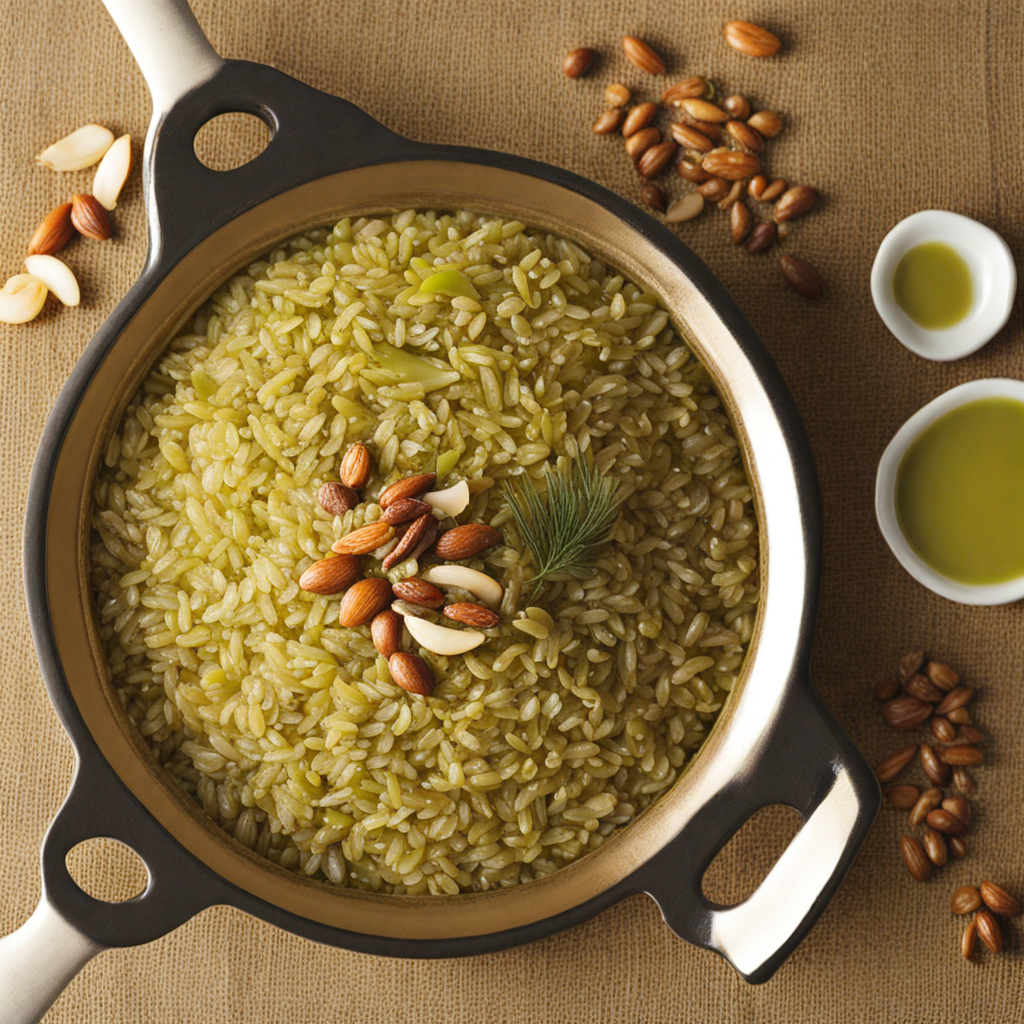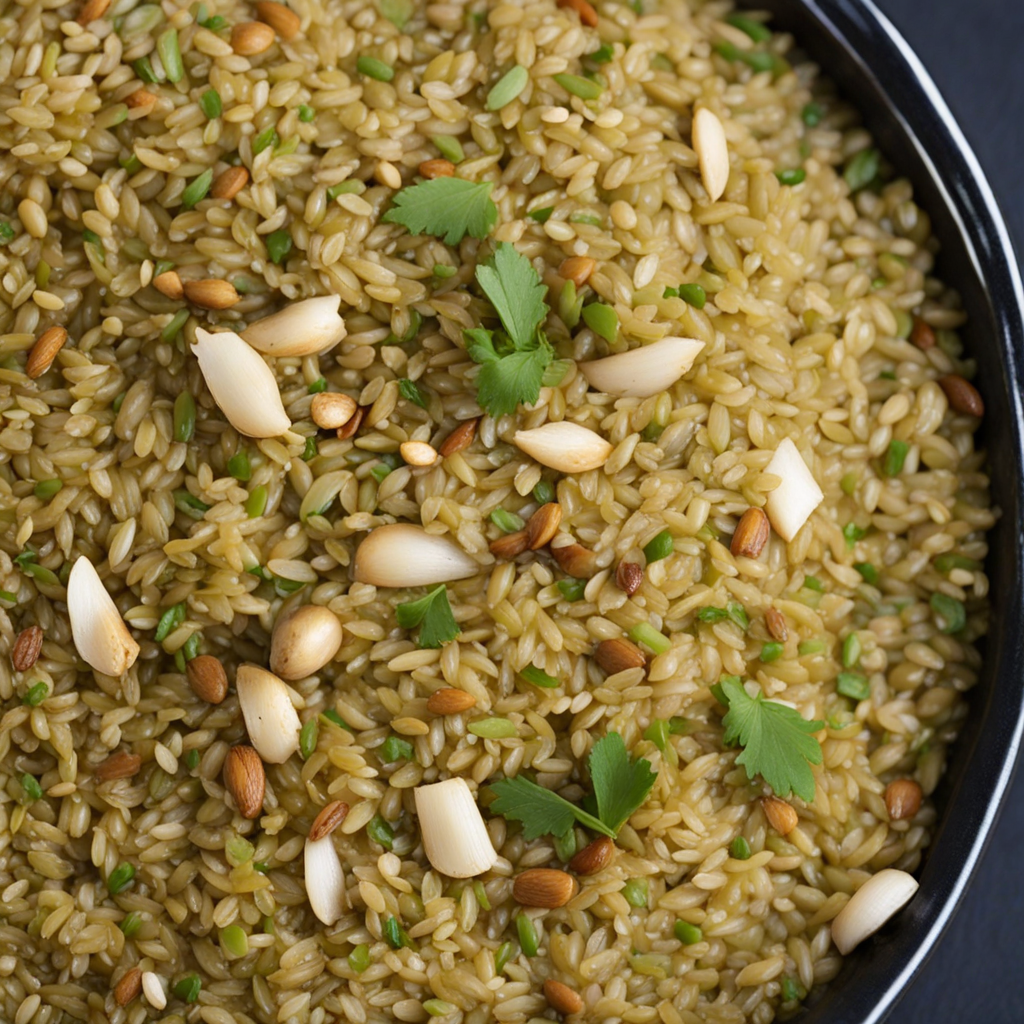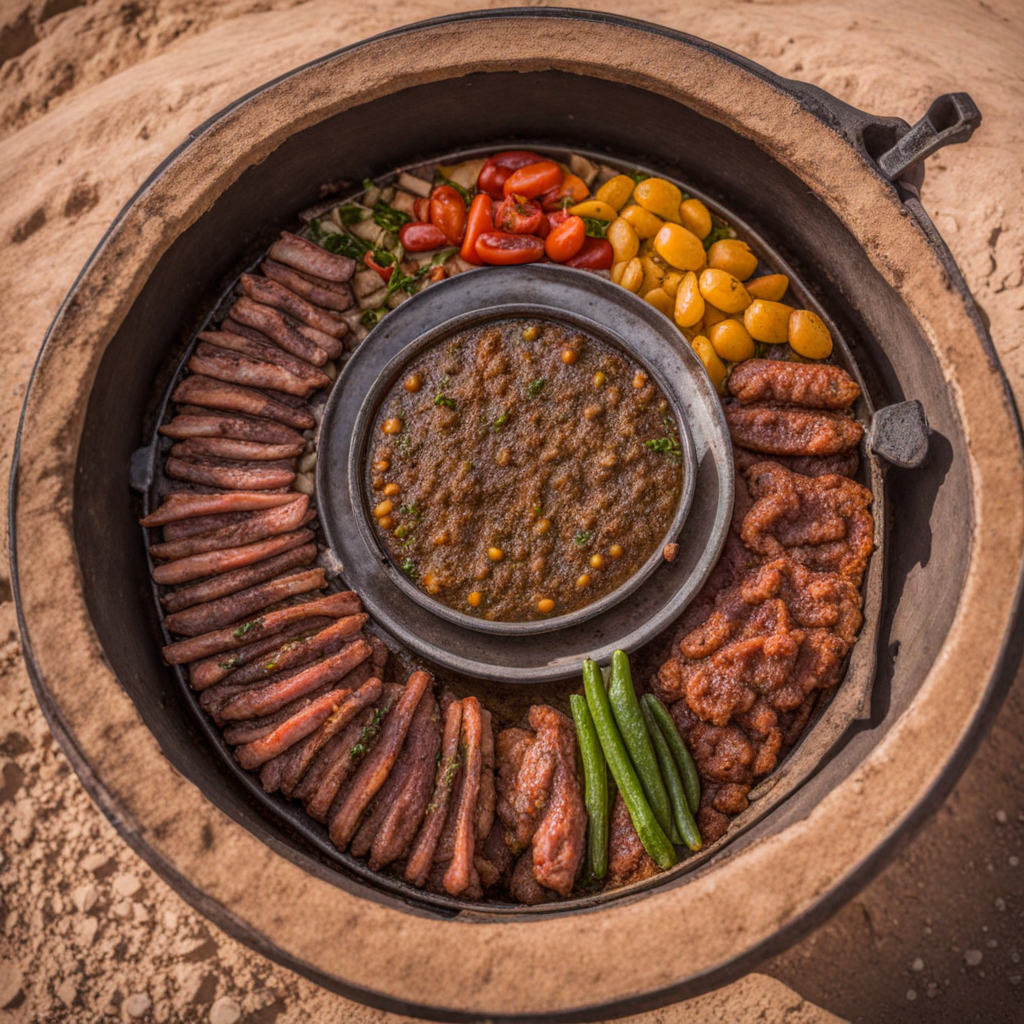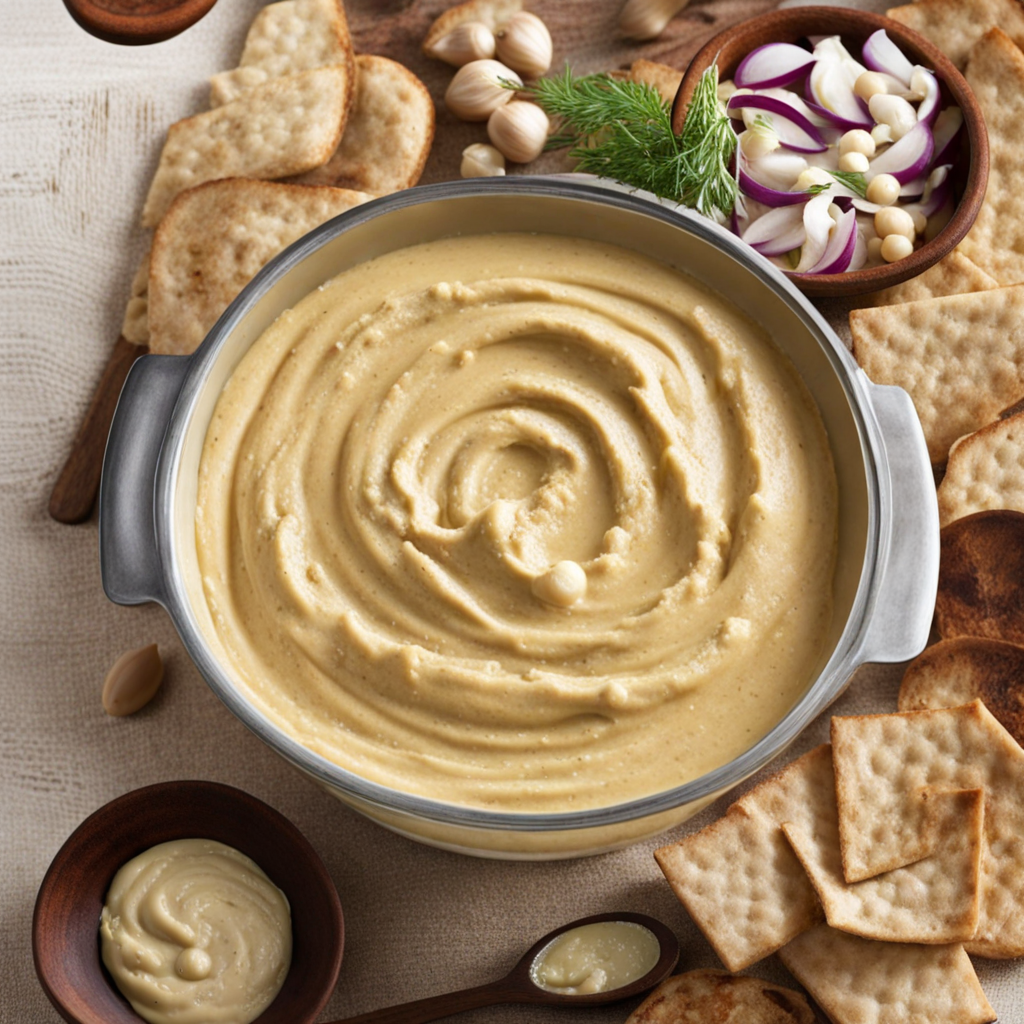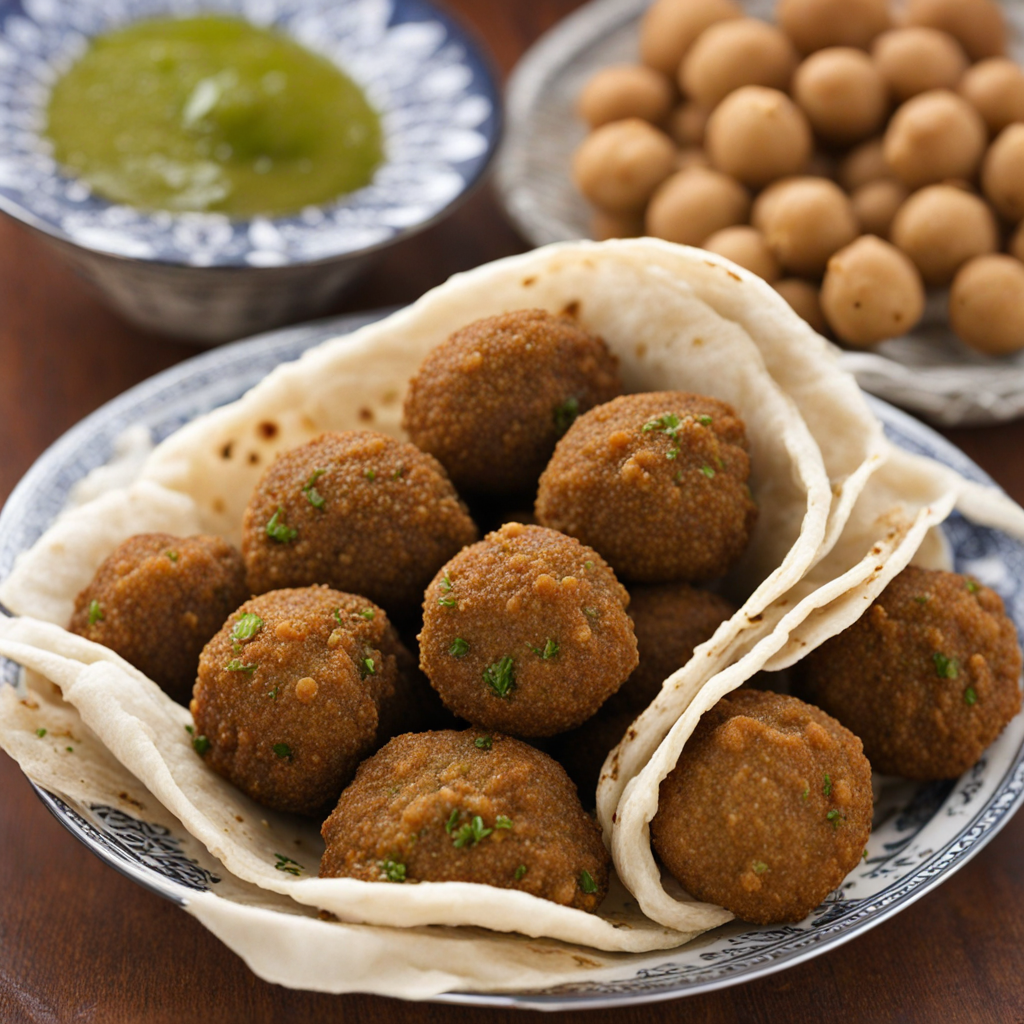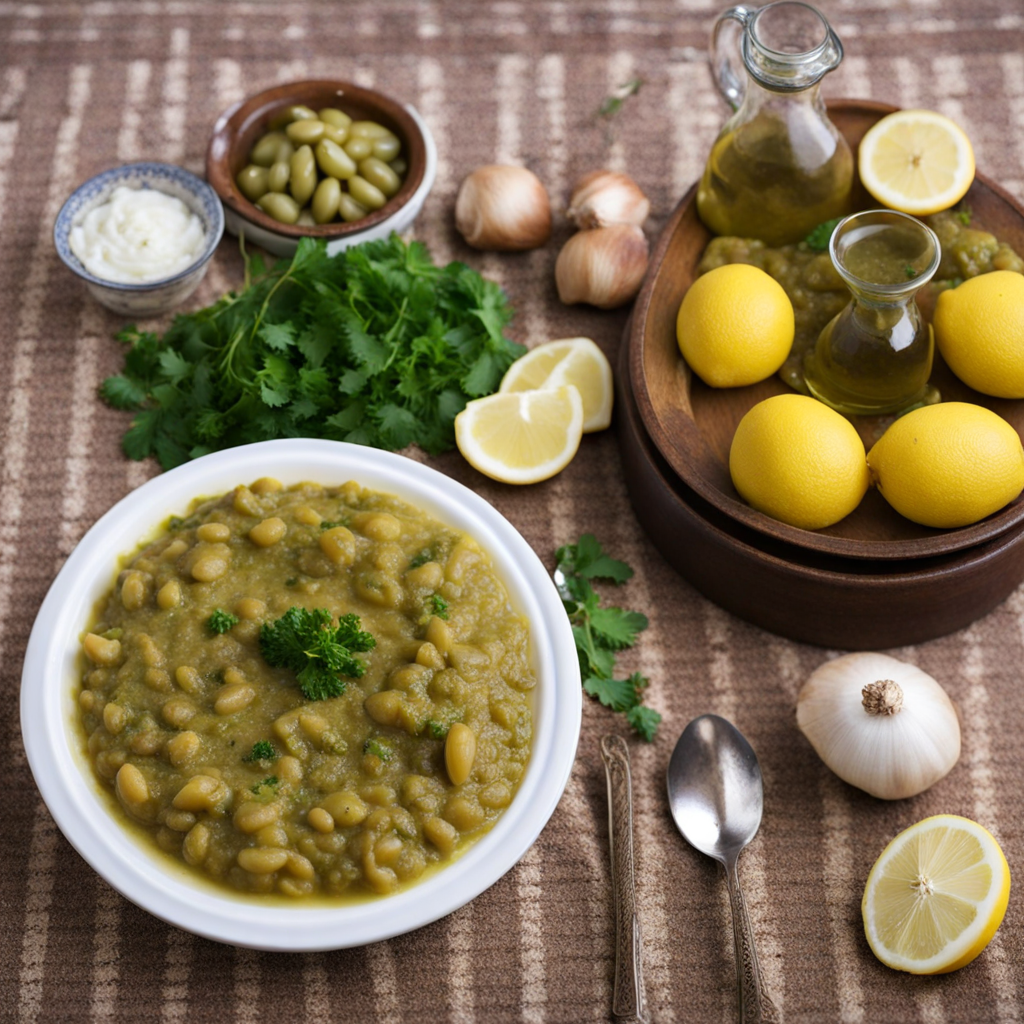Freekeh
Freekeh is an ancient grain that hails from the Middle East, particularly popular in Jordan. Made from green durum wheat that is harvested while still young, the grains are roasted, giving them a unique smoky flavor that sets them apart from other grains. The texture of freekeh is pleasantly chewy, with a nutty undertone that adds depth to any dish. Often compared to quinoa or bulgur, freekeh's versatility makes it an ideal ingredient for salads, pilafs, and even soups, providing a hearty base for a variety of flavors and ingredients. In Jordanian cuisine, freekeh is cherished not just for its taste but also for its nutritional benefits. Rich in fiber and protein, it is a filling and healthy choice that has been enjoyed for centuries. Traditional Jordanian dishes often feature freekeh combined with spices, vegetables, and meats, such as chicken or lamb. One popular dish is freekeh with roasted chicken, where the grains absorb the flavorful juices from the meat, creating a mouthwatering and satisfying meal that showcases the grain's ability to enhance the overall dining experience. Exploring freekeh opens the door to a world of culinary possibilities, as it can be easily incorporated into both traditional dishes and modern recipes. Its adaptability allows it to shine in various preparations, whether served warm or cold, paired with fresh herbs, nuts, and citrus for a refreshing salad or simmered with spices for a robust pilaf. As you discover freekeh, you will not only enjoy its delicious taste but also connect with a rich cultural heritage that celebrates wholesome, nutritious food.
How It Became This Dish
Origins of فريكة فريكة, pronounced "freekeh," has its roots deeply embedded in the ancient agricultural practices of the Levant region, particularly in modern-day Jordan, Syria, and Palestine. This grain is made from young green durum wheat that is harvested while still unripe, typically in the early summer months. The wheat is then roasted over an open flame, imparting a distinctive smoky flavor that sets it apart from other grains. The practice of harvesting and processing this grain dates back thousands of years, with references to its use found in ancient texts and historical accounts. The name "فريكة" itself is derived from the Arabic word "freek," which means "to rub" or "to separate," describing the process of rubbing the grains to remove the chaff. This technique not only showcases the ingenuity of early agricultural societies but also illustrates the resourcefulness of communities in utilizing their crops in versatile ways. The method of preparing فريكة has been passed down through generations, symbolizing a connection to the land and the heritage of the people who cultivate it. \n\n Cultural Significance In Jordanian and broader Arab culture, فريكة holds a significant place, especially during festive occasions and family gatherings. Traditionally, it is considered a staple dish during Ramadan, where families come together to break their fast with a hearty meal often featuring فريكة as a main ingredient. Its rich flavor and nutritional value make it a favored choice for both daily meals and special celebrations. Beyond its role in the culinary landscape, فريكة also reflects the agricultural heritage of the region. As a symbol of the seasonal cycles and the labor of farmers, it connects people to their ancestral roots. The grain is often associated with communal activities, such as harvest festivals, where families and communities gather to celebrate the bounty of the land. The preparation of فريكة can be seen as a ritual, with traditional recipes being shared and passed down, ensuring that the cultural significance of this food remains alive. \n\n Development Over Time The historical trajectory of فريكة has evolved alongside the region's agricultural advancements and culinary trends. In the early days, فريكة was primarily a rural dish, prepared in simple communal kitchens. However, as urbanization spread through the Levant in the 20th century, فريكة began to gain popularity in urban centers, where it became a symbol of culinary pride and heritage. During the mid-20th century, the introduction of modern cooking techniques and the globalization of food culture led to innovations in the preparation of فريكة. Chefs began to experiment with its use in contemporary dishes, integrating it into salads, pilafs, and even desserts. This adaptability has allowed فريكة to remain relevant in the fast-evolving culinary world, appealing to both traditionalists and modern gastronomes alike. \n\n Modern Culinary Uses Today, فريكة is celebrated not only for its traditional role but also for its versatility in modern cuisine. Chefs around the world have recognized its potential, incorporating it into gourmet dishes that highlight its unique flavor profile. Famed for its nutty, smoky taste, فريكة can be used as a substitute for rice or couscous, adding a distinct character to meals. In recent years, there has been a surge of interest in ancient grains and healthy eating, further elevating the status of فريكة. Nutritionists praise it for its high fiber content, protein, and essential nutrients, making it a wholesome choice for health-conscious consumers. As a result, فريكة has made its way onto menus in upscale restaurants and health food cafés, often featured in bowls, salads, and grain-based dishes that cater to contemporary dietary preferences. \n\n Global Recognition As the global culinary scene continues to embrace diverse foods, فريكة has found its way into international markets. The rise of Middle Eastern cuisine in the Western world has introduced many to this ancient grain, leading to a growing appreciation for its flavor and nutritional benefits. Food enthusiasts and home cooks alike are now exploring traditional recipes and adapting them to suit modern tastes, ensuring that فريكة remains a relevant and cherished ingredient. Moreover, as environmental concerns grow, the sustainability of ancient grains like فريكة has garnered attention. Its cultivation requires less water compared to other grains, making it a more sustainable choice for farmers in arid regions. This aspect of فريكة is particularly appealing in the context of climate change and food security, as more people seek to support sustainable agricultural practices. \n\n Conclusion: The Future of فريكة As we look to the future, the story of فريكة continues to unfold. With its rich history and cultural significance, فريكة is poised to remain a staple in Jordanian kitchens and beyond. The fusion of traditional techniques with modern culinary practices ensures that this ancient grain will not only survive but thrive in a rapidly changing world. As more people become aware of the health benefits and unique flavors of فريكة, it is likely to see even greater incorporation into diverse culinary traditions. This grain not only connects us to the past but also offers a glimpse into a sustainable and flavorful future, bridging the gap between heritage and innovation in the world of food.
You may like
Discover local flavors from Jordan


